Information
We want to provide our patients with as much information as possilble to help them understand their health. We provide this section to give the basics of spinal health and the principles upon which we operate.
Where Do All the Nerves Go?
Your nervous system controls and coordinates every function of your body. It is your nervous system that allows you to adapt and live in your environment. Chiropractic is a holistic method of keeping your spine, nerves, and energies functioning without interference so you can live a healthy lifestyle.
Head, face, upper neck, inner & middle ear, sympathetic nerve system, sinuses, eyes, auditory nerves and more.
Neck, shoulders, thyroid, tonsils, teeth, outer ear, nose, mouth, vocal cords, and more.
Arms, hands, heart, coronary arteries, esophagus, trachea, lungs, bronchial tubes, gallbladder, liver, stomach, pancreas, spleen, kidneys, ureters, adrenal glands, small intestines, and more.
Large intestines, appendix, abdomen, bladder, reproductive organs, lower back, lower extremities, ankles, feet, and more.
Hip bones, tail bone, buttocks, rectum, anus, and more.
Upper Cervical Spine

The Upper Cervical Spine consists of two bones, the Atlas, (C1) and the Axis, (C2) at the top of the neck. Much of your nervous system passes through this vital area. This area is also the most movable area of your spine. Because of this, subluxations in this crucial area are very common.
Since this area is in such close proximity to the brain, subluxations here can result in an alteration to a large variety of body functions. Much of the body's nervous system messages flow past this point. This means that very large areas of the body are supplied by the nerves that pass through or near here.
Some of the areas of nerve supply that can be affected by subluxations in the upper cervical spine include your brain, head, and face. Nervous system interference here could result in headaches, facial palsy, sinus trouble, allergies, fatigue, cross-eyes, or dizziness.

In addition, if a pair of large and important nerves, the "Vagus" nerves, are affected by a subluxation in the upper cervical spine the parasympathetic nervous system function can be altered. These nerves are responsible for visceral motor function (control) of many of your chest organs as well as such functions as swallowing and your vocal cords.
Other areas that could experience functional changes that are controlled by the vagus nerve include such major organs as the heart, lungs, esophagus, stomach, gallbladder, and small intestines. As you can see, a subluxation affecting the vagus nerve can have a very wide and profound impact on the function and health of a large portion of your body.
Cervical Spine

The cervical spine consists of seven vertebrae. Shown here are the third cervical, (C3) through the seventh cervical, (C7) vertebrae.
When the nerves that pass through this area are involved with subluxation areas such as the neck muscles, the shoulder, as well as the arms and hands are affected. In these situations, problems such as neck pain, arm pain, numbness, stiff neck, bursitis, as well as many other musculoskeletal problems are possible.

In addition to these areas, nerves originating in this area of the spine innervate the throat, sinuses, nose, thyroid gland, lymph nodes, diaphragm, and other organs and systems. When subluxation is involved in these areas a variety of functional problems can result.
It is imperative for the organs, systems, muscles, joints and all other tissues in these areas to receive proper nerve signals in order for them to function as they were intended. Subluxation reduces this function thus allowing the areas supplied by the nerves to be working at less than their optimal ability.
As with any portion of the spine, subluxations in this area can also have an effect on other segments of the spine and creating imbalances, postural problems, and functional problems elsewhere.
Thoracic Spine

The Thoracic Spine, commonly referred to as your middle back, consists of 12 vertebrae, (T1 - T12). This is the longest portion of your back. Each of these vertebrae has a pair of ribs attached to them. The nerves that exit out between these vertebrae go to muscles and other surface tissues as well as internal organs.
Some of the surface areas these nerves go to include parts of the arms from the elbows down, the hands, and fingers. Also the muscles of the middle back, the chest muscles, and muscles of the rib cage are supplied by nerves that exit out from this area of the spine.
Pain or numbness and other musculoskeletal problems may be just some of the possible results from subluxations affecting these areas and tissues.
The internal organs supplied by nerves from the thoracic spine include much of the body parts supplied by the sympathetic nervous system. This portion of the nervous system innervates many of the organs in the chest and abdomen including, the heart, lungs, bronchial tubes, gallbladder, liver, stomach, pancreas, spleen, adrenal glands, kidneys, and small intestines. Subluxations affecting these organs can lead to a large list of functional and systemic problems including, asthma, certain heart problems, bronchitis, blood pressure problems, ulcers, allergies, kidney trouble, and digestive problems, to name only a few. Most subluxations affecting these areas go undetected for a long time before a health problem is ever noticed.
The Lower Back

The Lumbar Spine is the part of your spine commonly referred to as your "lower back". It consists of five large vertebrae, (L1 - L5). Although this is an area of the spine that many people recognize when they think of pain, the nerves that exit this portion of the spine have responsibilities for vital body functions. This area of your spine has the largest and strongest vertebrae and some of the largest muscles supporting it.
The nerves that exit from these areas are large and control some very large muscles. These muscles include the large and small muscles of the lower back, the muscles of the thigh, legs, calf muscles, and feet. The sciatic nerve has its origin from the nerves that exit from the lumbar spine. In addition to the muscles, many joints in this area are also supplied by nerves from the lumbar spine including the hips, knees, ankles and feet.
Many organs and tissues also get their nerve supply from nerves that exit from the lumbar spine. These include the large intestines, appendix, male or female reproductive organs, the bladder, prostate gland, and others.
Subluxations in these areas can have a vast affect including pain in the lower back, legs, or sciatic pain. Numbness in the back and legs is also possible. Muscle spasm or weakness can also result. Scoliosis and joint problems are also possible.
If the organs supplied by these nerves are affected, the possible results include, constipation, diarrhea, cramps, varicose veins, bladder problems, menstrual problems, infertility problems, bed wetting, urination problems, and poor circulation, among others.
The Sacrum and Coccyx

The sacrum and coccyx are commonly referred to as your "base bone" or "tail bone". As a child the sacrum consists of five individual bones and the coccyx is made up of three to five bones. In the adult, the sacral segments and the coccygeal segments fuse so that each of these two bones are solid singular bones. The sacrum forms joints with each of the hip bones and helps to stabilize the pelvis.
The nerves that exit the sacrum and coccyx go to the tissues and organs in that area. These include the muscles of the buttocks and hips as well as portions of the thigh and leg.
In addition, organs and tissues such as the rectum and portions of pelvic tissues are also innervated by these nerves. As a result, some of the problems that may occur as a result of subluxations here could be sacroiliac conditions, hemorrhoids, scoliosis, and pain when sitting.
Spinal Nerve Distribution
This chart shows all the nerves that go to all the muscles. What happens if we cut a nerve that goes to a muscle? We lose control of that muscle right? But, what happens if we put pressure on that nerve? The muscle won't work properly, maybe muscle spasm, pain, weakness.

Vertebral Subluxation and Nerve Diagram

Subluxation
 What is a Subluxation and what does it do to me?
What is a Subluxation and what does it do to me?
First, the simple explanation.
In simplest terms, a subluxation (a.k.a. Vertebral Subluxation) is when one or more of the bones of your spine (vertebrae) move out of position and create pressure on, or irritate spinal nerves. Spinal nerves are the nerves that come out from between each of the bones in your spine. This pressure or irritation on the nerves then causes those nerves to malfunction and interfere with the signals traveling over those nerves.
How does this affect you? Your nervous system controls and coordinates all the functions of your body. If you interfere with the signals traveling over nerves, parts of your body will not get the proper nerve messages and will not be able to function at 100% of their innate abilities. In other words, some part of your body will not be working properly.
It is the responsibility of the Doctor of Chiropractic to locate subluxations, and reduce or correct them. This is done through a series of chiropractic adjustments specifically designed to correct the vertebral subluxations in your spine. Chiropractors are the only professionals who undergo years of training to be the experts at correcting subluxations.
Now, the detailed explanation.
Subluxations are really a combination of changes going on at the same time. These changes occur both in your spine and throughout your body. For this reason chiropractors often refer to vertebral subluxations as the "Vertebral Subluxation Complex", or "VSC" for short.
In the VSC, various things are happening inside your body simultaneously. These various changes, known as "components," are all part of the vertebral subluxation complex. Chiropractors commonly recognize five categories of components present in the VSC. These five are:
 The Osseous (Bone) Component is where the vertebrae are either out of position, not moving properly, or are undergoing physical changes such as degeneration. This component is sometimes known as kinesiopathology.
The Osseous (Bone) Component is where the vertebrae are either out of position, not moving properly, or are undergoing physical changes such as degeneration. This component is sometimes known as kinesiopathology.- The Nerve Component is the malfunctioning of the nerve. Research has shown that only a small amount of pressure on spinal nerves can have a profound impact on the function of the nerves. This component is scientifically known as neuropathology.
- The Muscle Component is also involved. Since the muscles help hold the vertebrae in place, and since nerves control the muscles themselves, muscles are an integral part of any VSC. In fact, muscles both affect, and are affected by the VSC. This component is known as myopathology.
- The Soft Tissue Component is when you have misaligned vertebrae and pressure on nerves resulting in changes in the surrounding soft tissues. This means the tendons, ligaments, blood supply, and other tissues undergo changes. These changes can occur at the point of the VSC or far away at some end point of the affected nerves. This component is also known as histopathology.
- The Chemical Component is when all these components of the VSC are acting on your body, and therefore causing some degree of chemical changes. These chemical changes can be slight or massive depending on what parts of your body are affected by your subluxations. This component is often known as biochemical abnormalities.
Chiropractors have known about the dangers of subluxations for over one hundred years. Today, more scientific evidence is showing the dangers of subluxations and the health benefits of correcting them. To be truly healthy, it is vital that your nervous system be functioning free of interference from subluxations. Our goal is to allow your body to return itself to the highest level of health possible by correcting VSC. Chiropractors are the ONLY health professionals trained in the detection, location, and correction of the VSC.
Subluxation Degeneration
It is important to understand the ongoing process of subluxation, and the effect time plays on the subluxated spine.
 Subluxation
Subluxation
This is a representation of one type of subluxation. A subluxation, as defined by the Association of Chiropractic Colleges is: "A subluxation is a complex of functional and/or structural and/or pathological articular changes that compromise neural integrity and may influence organ system function and general health." When a subluxation occurs it causes nerve interference in some portion of the body affected by those nerves. The subluxation causes changes to the structure as well as the nerves. These changes get progressively worse as time is allowed to work on the subluxated area of the spine. These changes take the form of ongoing degeneration known as "subluxation degeneration". By understanding the type and amount of changes, it is possible to reasonably estimate the time subluxations have been present in a spine. Having this information is useful in understanding the time and effort needed for correction.
 Near Normal
Near Normal
This is a side x-ray view of the neck. As with all the pictures you will see on this page, the patient is looking to the right of the screen, so you are viewing the right side of their neck. We will call this picture a "near normal" spine. Compare this spine with the ones you will see below on this page. Notice the normal forward curve of the neck. This curve helps absorb shock. Notice how each of the disc spaces between C2 (second bone in neck) and C7 are thick and even, this again is normal. Also notice how the front portions (right on the x-ray) of each of the vertebrae (called the 'body' of the vertebrae) are fairly square with clear and well defined borders. This type of arrangement is normal in the neck. Normal vertebrae in other parts of the spine also have similar characteristics to what we see here. When subluxations occur and are left uncorrected, ongoing relentless changes occur that result in damage to the structure and function of the spine along with nerve damage and the resulting problems caused from improper nerve supply.
 Phase One Subluxation Degeneration
Phase One Subluxation Degeneration
Phase One Subluxation Degeneration is seen in subluxations that have been present for up to twenty years. This phase is characterized with a loss or change in the normal curve in the spine. On this example you can see that the normal forward (lordotic) curve is lost. This spine even has developed a reverse curve in the neck. The disc spaces have also begun to exhibit a slight change in shape. One good point is that the bodies of each of the vertebrae (the square part in front) still exhibits clean clear borders. Segmental motion may be abnormal but overall motion is probably not affected. Chiropractic reconstructive care for a phase one can take from 6 to 18 months. More than 80% of people with Phase One Subluxation Degeneration have no pain. Therefore, if left uncorrected, phase one continues to progress with time until it eventually reaches the next phase.
 Phase Two Subluxation Degeneration
Phase Two Subluxation Degeneration
Phase two subluxation degeneration is normally seen in subluxations that have been present between 20 and 40 years. This phase has some of the same characteristics of the previous phase including a loss of normal curvature and position as well as an alteration in segmental motion. In addition, spines with Phase Two Subluxation Degeneration many times show a reduction in the patient's range of motion in that area. X-rays of a phase two begin to show calcium changes or buildup at certain levels of the spine. These changes are sometimes called by many names including spurs and arthritis. Disc spaces between the affected vertebrae are noticeably narrower and may appear to be flattening out. Although most people with Phase Two Subluxation Degeneration may not exhibit any symptoms, some may start to feel stiff or achy. Chiropractic reconstructive care for patients in phase two ranges from 1.5 years to 2.5 years. Again, if Phase Two Subluxation Degeneration is left uncorrected it slowly advances to the next phase.
 Phase Three Subluxation Degeneration
Phase Three Subluxation Degeneration
Phase Three Subluxation Degeneration is caused by subluxations that have been continuing on for between 40 and 65 years. This phase has all of the attributes of the previous phases, only worse. The curvatures are abnormal, the disc spaces are vastly decreased and changed. Calcium changes on the spine are abundant in this phase. Normally, people in phase three have a restricted range of motion and probably exhibit symptoms of some kind. In phase three the vertebrae show obvious changes and mutations in shape. Projections made of calcium, sometimes referred to as "spurs or lipping", can be readily seen on x-ray. Chiropractic reconstructive care for patients in phase three ranges from 2.5 years to 3.5 years. This does not mean that at the end of this time that any or all of the calcium changes will be gone. In many instances the body adapts to the presence of the calcium and positive changes can only be measured from a functional standpoint. As before, if Phase Three Subluxation Degeneration is left unchecked it slowly advances onward into the next phase.
 Phase Four Subluxation Degeneration
Phase Four Subluxation Degeneration
Phase four subluxation degeneration is seen with subluxations that have been raging on uncorrected or altered for over sixty five years. Phase four is a grave condition that will negatively affect the patients longevity and quality of life. The massive amount of neurological damage caused by years of subluxation that have lead to phase four are probably taking a serious toll on this person's health status. X-rays in phase four show serious severe structural changes. Vertebrae exhibit massive calcium changes, disc spaces appear blurred, and the bones themselves appear fused. In this scenario the patient will have a severe restriction of range of motion in addition to probably a number of other health issues. Reconstruction may not be possible in phase four, but care can be directed to some reduction in subluxation with the goal of improvement in the quality of life remaining. Patients in Phase Four Subluxation Degeneration have a serious situation both structurally and neurologically, but they are certainly not beyond hope. Many patients in phase four report significant improvements in symptoms, conditions, mobility and quality of life.
It should be noted that the above are common guidelines and not hard rules. Every person is dynamic and different. People degenerate at different rates and heal at different rates. The further along your spine may be with subluxation degeneration the more strenuous and time consuming your road to improvement will be. For this reason we always stress early care to stop and prevent the advancement of subluxation degeneration. Of course, if you're not under chiropractic care, the best time to start is NOW!
Subluxation Degeneration Phases

History of Chiropractic

Primitive forms of chiropractic were used as early as 17,500 B.C. Hippocrates, the Father of Medicine, talked of spinal misalignment problems, and Germany has had "bonesetters" for years. Chiropractic as we know it started about 100 years ago.
The first recorded chiropractic adjustment was performed on September 18,1895, by Dr. Daniel David Palmer, a Canadian-born teacher and heater.
D.D. Palmer was born in 1845 on the Ontario frontier. At age 11, a business failure forced his family to move to the U.S. He and his younger brother stayed behind and worked in a factory until 1865. Then they rejoined their family.
By the 1880s, Palmer's thirst for knowledge led him to learn magnetic healing. This therapy used the body's magnetism to heal others. Palmer opened his first magnetic healing practice in Burlington, Iowa. A year later, in 1887, Palmer moved to Davenport, Iowa, where he started another practice.
Dr. Palmer was studying the cause and effect of disease. In Palmer's building, was a janitorial service, owned by Harvey Lillard. Lillard, who had been deaf for 17 years. Palmer asked how he had become deaf. Lillard replied that one day, when he had strained his back, he heard something "pop" in his back. For over17 years Mr. Lillard complained of hearing problems.
Palmer examined Lillard's back and found a spinal vertebrae out of position. Reasoning this to be the cause of Lillard's deafness, Palmer pushed the vertebrae back into place. As he expected, Lillard's hearing improved. Palmer theorized that decreased nerve flow may be the cause of disease, and that misplaced spinal vertebrae may cause pressure on the nerves. He reasoned, if the spinal column were correctly positioned, the body would be healthy.
This dramatic beginning caused a great deal of excitement, and soon exaggerated claims surfaced from activists and zealots. At first Dr. Palmer thought that he had discovered a cure for deafness. Because chiropractic challenged the traditional medical concept of health, a campaign was begun to discredit and eliminate the profession. This campaign is less active today.
One of Dr. Palmer's patients, a minister, took the Greek words for "hand" (cheiros) and "done by" (pracktos) and put them together to spell chiropractic, meaning "done by the hand."
Palmer decided to open a chiropractic school in 1897. By 1902, 15 people had graduated from the Palmer Infirmary and Chiropractic Institute, which was renamed the Palmer School of Chiropractic (PSC) in 1907. One of these graduates was Palmer's son, Bartlett Joshua (B.J.) Palmer, DC, who would become as memorable a figure in chiropractic history as his father.
Daniel David Palmer began some travels to the West Coast, and little by little, His son, Bartlett, took over running the daily activities of the school. Chiropractors, just as early medical doctors, were not licensed by the government A Chiropractors simply opened a practices after graduating from chiropractic schools. By that time, however, medical doctors were required to have licenses. This discrepancy caused continual problems for chiropractors throughout the first half of the 20th century. In 1906, When Daniel Palmer returned to Davenport, he and hundreds of other chiropractors were convicted of practicing medicine without a license. He was released after serving 23 days of a 105-day sentence, and paying a $350 fine. A year later, one of Palmer's former students, Shegataro Morikubo, DC, was arrested in Wisconsin for practicing medicine, surgery and osteopathy without a license. In a landmark decision, the judge and jury agreed that Morikubo was not practicing medicine, surgery and osteopathy. Rather, he was practicing something different - chiropractic.
In 1910, B.J. Palmer introduced the use of X-rays. In 1924, he introduced the neurocalometer to reveal more scientifically the location of out-of-position spinal bones.
Through the end of World War II, chiropractic became controversial under B.J. Palmer, the son of the profession's founder. He administrated the largest chiropractic college at that time, owned radio and TV stations, traveled extensively, and even hosted three U.S. Presidents - Coolidge, Hoover and Truman - at his home. In 1924, B.J. had the first radio station west of the Mississippi , WOC (or, Wonders Of Chiropractic). In 1928 he purchased WHO (With Hands Only) in Des Moines. However history will judge B.J. Palmer, it can be certain that without B.J. Palmer, chiropractic would not have survived the early ruthless attempts to discredit its healing ability.
Starting in 1944, World War II veterans could get government benefits. Using the G.I. Bill , returning soldiers enrolled in chiropractic colleges by the thousands.
Chiropractic is now second only to medicine as the largest primary health care provider in the western world. Palmer College of Chiropractic in Davenport, Iowa, grew from 24 students in 1906 to 3,100 in 1923. Today, there are more than 23 chiropractic institutions throughout the world Current enrollment at chiropractic institutions now exceeds 10,000 dedicated students.
Since Dr. Palmer's first primitive chiropractic adjustment, the art and science of chiropractic has progressed significantly. Acceptance among other health care professionals has resulted from advanced diagnostic procedures, scientific research, and sophisticated equipment

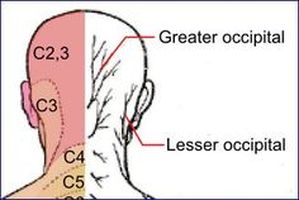

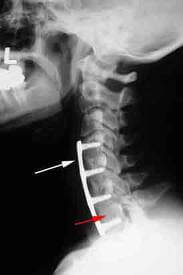




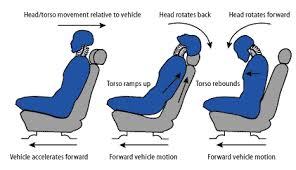
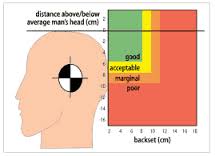



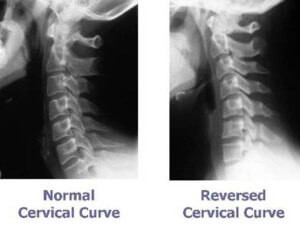

 The Upper Cervical Spine consists of two bones, the Atlas, (C1) and the Axis, (C2) at the top of the neck. Much of your nervous system passes through this vital area. This area is also the most movable area of your spine. Because of this, subluxations in this crucial area are very common.
The Upper Cervical Spine consists of two bones, the Atlas, (C1) and the Axis, (C2) at the top of the neck. Much of your nervous system passes through this vital area. This area is also the most movable area of your spine. Because of this, subluxations in this crucial area are very common. In addition, if a pair of large and important nerves, the "Vagus" nerves, are affected by a subluxation in the upper cervical spine the parasympathetic nervous system function can be altered. These nerves are responsible for visceral motor function (control) of many of your chest organs as well as such functions as swallowing and your vocal cords.
In addition, if a pair of large and important nerves, the "Vagus" nerves, are affected by a subluxation in the upper cervical spine the parasympathetic nervous system function can be altered. These nerves are responsible for visceral motor function (control) of many of your chest organs as well as such functions as swallowing and your vocal cords. The cervical spine consists of seven vertebrae. Shown here are the third cervical, (C3) through the seventh cervical, (C7) vertebrae.
The cervical spine consists of seven vertebrae. Shown here are the third cervical, (C3) through the seventh cervical, (C7) vertebrae. In addition to these areas, nerves originating in this area of the spine innervate the throat, sinuses, nose, thyroid gland, lymph nodes, diaphragm, and other organs and systems. When subluxation is involved in these areas a variety of functional problems can result.
In addition to these areas, nerves originating in this area of the spine innervate the throat, sinuses, nose, thyroid gland, lymph nodes, diaphragm, and other organs and systems. When subluxation is involved in these areas a variety of functional problems can result. The Thoracic Spine, commonly referred to as your middle back, consists of 12 vertebrae, (T1 - T12). This is the longest portion of your back. Each of these vertebrae has a pair of ribs attached to them. The nerves that exit out between these vertebrae go to muscles and other surface tissues as well as internal organs.
The Thoracic Spine, commonly referred to as your middle back, consists of 12 vertebrae, (T1 - T12). This is the longest portion of your back. Each of these vertebrae has a pair of ribs attached to them. The nerves that exit out between these vertebrae go to muscles and other surface tissues as well as internal organs.








 What is a Subluxation and what does it do to me?
What is a Subluxation and what does it do to me? The Osseous (Bone) Component is where the vertebrae are either out of position, not moving properly, or are undergoing physical changes such as degeneration. This component is sometimes known as kinesiopathology.
The Osseous (Bone) Component is where the vertebrae are either out of position, not moving properly, or are undergoing physical changes such as degeneration. This component is sometimes known as kinesiopathology. Subluxation
Subluxation Near Normal
Near Normal Phase One Subluxation Degeneration
Phase One Subluxation Degeneration Phase Two Subluxation Degeneration
Phase Two Subluxation Degeneration Phase Three Subluxation Degeneration
Phase Three Subluxation Degeneration Phase Four Subluxation Degeneration
Phase Four Subluxation Degeneration
 Primitive forms of chiropractic were used as early as 17,500 B.C. Hippocrates, the Father of Medicine, talked of spinal misalignment problems, and Germany has had "bonesetters" for years. Chiropractic as we know it started about 100 years ago.
Primitive forms of chiropractic were used as early as 17,500 B.C. Hippocrates, the Father of Medicine, talked of spinal misalignment problems, and Germany has had "bonesetters" for years. Chiropractic as we know it started about 100 years ago.